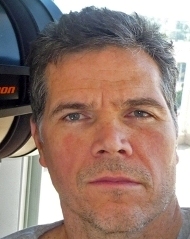Hydrualic Certification and Support Lead
Huntsville, AL
1992-1993
In 1992, my bosses named me the Water Resources Products Certification and Support Lead, which was my primary responsibility for the remainder of my time at Intergraph.
I was responsible for certifying the calcs as well as such things as interface operations. It took about six weeks (overall duration, not necessarily 240 hours) for me to be absolutley sure that the math was good.
A couple of takeaways from this:
- this was essentially the hurdle required for a hydraulic engineer to be sure of the math when recommending (or permiting) adoption of our software for design. It is a not-insignficant hurdle.
- I was asked by my boss, "have you thoroughly checked the interface?" I pointed out that GUI checks and operability checks are essentially resource plug-and-play: you can delegate those tasks easily. Low expertise and low continuity requirements whereas the calc certification is pretty much the exact opposite. Some things are easier than others.
At the time I started, InFlow and InSewer would stop processing with a polite message if any of the pipes surcharged.
"I can't use this in Florida. We allow the inlets to surcharge six inches above the grate to get enough flow through the pipes. We use every inch of that."
HEC-22 wasn't around back then. We did have the City of Austin's Drainage Manual, which provide some guidance (interestingly, I would be in Austin seventeen years later working with the TxDoT Hydraulic Leads on implementing StormCAD in OpenRoads).
All my previous drainage design work had been calced in spreadsheets.
I pretty much drove the development of our HGL methodology, including how to model dynamic pumps in a steady state analysis. It took about a six weeks working on the whiteboard with the Water Resources Engineering Manager, waiting for the code, testing it and returning to the whiteboard. We developed a good solution that made us market-viable for several years and versions (including Storm&Sanitary) until HEC-22 became the de facto standard, at which time it was incorporated into the code (I remember not liking that HEC-22 "reset" the HGL to the inlet grate height in a surcharged system. It made sense that inlets become outlets when surcharged from upstream, but for the most part, our solution was sensible and defensible).
I was very proud of being able to transform a product from limited applicability to a solution that became viable throughout the market. That was my first legitimate Big Impact, an Industry Transformation.
As Water Resources Support Lead, I established relationships with people around the country. It seemed I talked to Sophia Bhatia of San Diego Data Processing Corporation (SDDPC) on a near-daily basis.
Two years after leaving Intergraph, I moved to San Diego to do contract work for Sophia and SDDPC to help integrate InSewer with GIS per the EPA's requirements to waive Secondary Treatment of San Diego's Wastewater. Three months stretched to five years. I've now lived in San Diego for 25 years.
Other info about my time at Intergraph: 1993 - Intergraph Corporation
